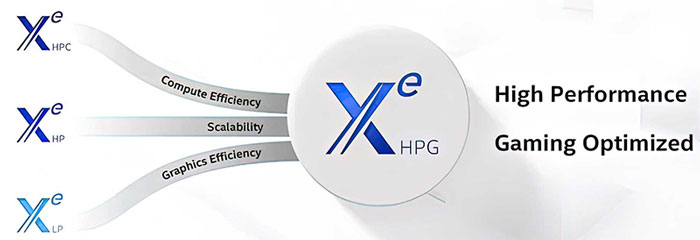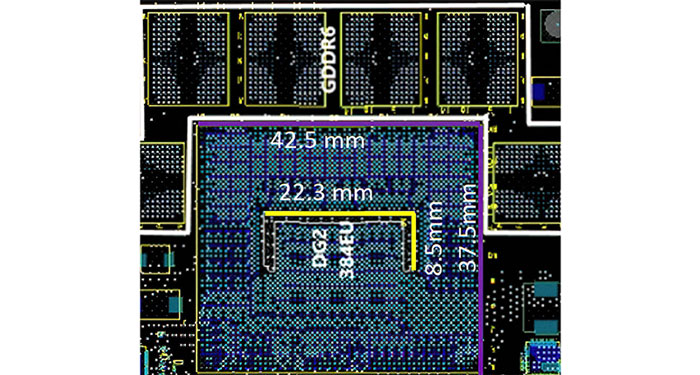Gamers and enthusiasts are waiting eagerly for Intel to offer greater market competition and stability as a third contender in the consumer GPU race. It is expected to begin to do so with DG2 – a second series of discrete GPUs - later this year, and these GPUs are based upon a relatively new Xe tier dubbed Intel Xe HPG – where the G is for gaming.

A fortnight ago HEXUS reported upon Intel Graphics boss Raja Koduri revealing to his Twitter followers that he had just run a hot from the foundry Xe-HPG GPU through the new 3DMark DirectX 12 Ultimate feature test focussing on Mesh Shading performance. Mesh Shading is one of four important parts of DX12 Ultimate alongside ray tracing, variable rate shading, and sampler feedback. Koduri didn't give any solid information away other than the Xe-HPG was up and running and capable of running complex and demanding benchmarks – in short we didn't get any performance indications.
Earlier today VideoCardz shared a rumour post about the deciphering of a cryptically coded message from a Twitter source dubbed Raichu. The decoded message appeared to detail an upcoming list of Intel Xe-HPG GPUs. There are six GPUs mentioned in the decoded text strings, alongside vitals such as memory quotas and bus widths. Remember this info is worthy of a hefty pinch of salt, but I found it interesting to check through, and it roughly aligns with previous leaks and spills.
- 512 EU (4096 SP) / 256bit-bus / 8 or 16G VRAM
- 384 EU (3072 SP) / 192bit-bus / 6 or 12G VRAM
- 256 EU (2048 SP) / 128bit-bus / 4 or 8G VRAM
- 192 EU (1536 SP) / 128bit-bus / 4G VRAM
- 128 EU (1024 SP) / 64bit-bus / 4G VRAM
- 96 EU (768 SP) / 64bit-bus / 4G VRAM
In its report VideoCardz named the Xe-HPG GPUs after their EU counts, such as the 'Xe-HPG 512EU' at the top of the pile. It reports that the Xe-HPG 384EU has previously leaked in a more comprehensive fashion, with a reputed GPU size of 190mm2, and this GPU is pictured with six GDDR6 memory modules below.

One particular puzzle mulled over about this line of Xe-HPG samples is that they look similar in configuration to the Radeon RX 6000 series, but AMD's RDNA 2 GPUs have Infinity Cache and high boost clocks to boost the memory bandwidth – what is Intel doing so that it is not left behind in this regard?
The most recent information from Intel admits that it will be using an external foundry for this project, probably TSMC 7nm. Hopefully TSMC doesn't have any problems in supplying an extra competitor in the PC gaming GPU race later this year.













